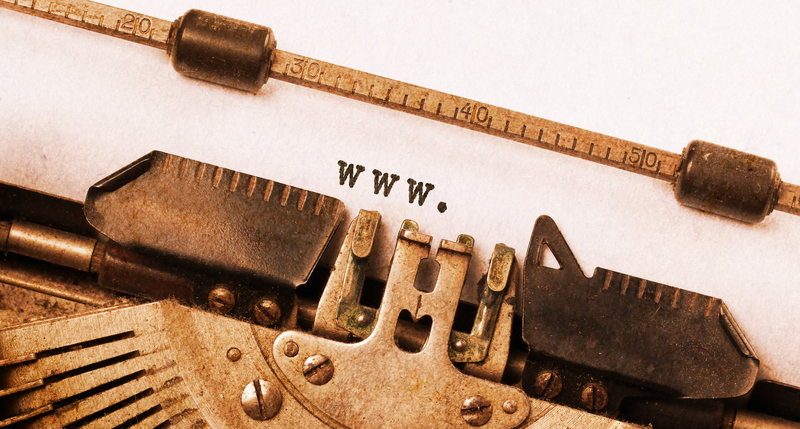Accounts Receivable Best Practices for E-commerce Stores
Is your online store facing an unexpected cash flow crisis? Don’t know how your business got here? If that’s the case then you should know that you are not alone. Your situation is similar to that of many young e-commerce store owners who have just started on their path to success.
It is very common for growing businesses to experience such cash flow crises. And we should warn you that the threat is very real! Without enough cash in circulation, or in your pocket for that matter, you might not be able to meet your daily expenses and operate the your e-commerce business efficiently. Hence, cash-flow problems can potentially put an end to your business, even if it is a profitable one.
However, this definitely does not mean that you get disheartened or feel discouraged to pursue your business goals. You should not let all that hard work go down the drain! Fortunately, such calamities are avoidable. All you need to do is follow some accounts receivable best practices, much more effectively so as to achieve instant positive results. Yes, your Accounts Receivables!
Most companies face a cash flow disaster in the first place because they fail to put an adequate accounts receivable collection system in place. With the establishment and implementation of the right billing and collection policies, you won’t have to face the receivable problems at all! You will be able to dodge any cash flow crises in the future and will be able to maintain its operations without any hiccups along the way.
In addition to the policies that you need to introduce in your business, there are also some tips that you could follow.
These tips and tricks will help ensure that you collect your accounts receivable on time and maintain a steady flow of cash for your daily business needs.
Accounts Receivable Best Practices
1. Send invoice to clients at the right time:
Sending invoice to the clients at the right time is crucial for collection of the payment on time. However, you should send it not only when the time is right for you but when the time is right for the clients as well. You should be considerate of their schedules and company procedures.
For example, you might have the policy of sending an invoice to your client at the end of four weeks. However, your client’s company policies may dictate that they get the approval of the higher officials before dispatching any amount due. The procedure of getting this approval may take time. If you send the invoice at the end of the four weeks, according to the time you think is right, your payment might get delayed. The client party will have to spend further time in getting approvals. In this case, sending the invoice a little before the end of four weeks may have helped you in collecting the payment on time.
Such a practice will demand that you respond to each client’s needs separately, and so you will need to keep track of separate billing and collection dates, as well as different account balances. However, moving away from such a uniform and standard practice for all clients will certainly have drastic yet positive changes in your cash flow. The switch will be completely worth it!
2. Make use of technological innovations:
In today’s world anyone, who does not adopt the right technology in their field, lags behind while their technologically savvy competitors win the race. Using technology is not just important for keeping ahead of the game, it has some very practical benefits.
It can add convenience and efficiency to your accounts receivable collection process.
So do not think twice and send any invoices that you have electronically. Doing so will save lots of time as an email or online is quicker than any mail service which may take many days.
Also, the margin for error, when sending your invoice through email, is minimal; you can just send the invoice as a reply to the client’s mail instead of checking and re-checking the different addresses of a client’s multiple offices before finally sending off the invoice through a mail service. Since everyone these days checks their email, an invoice sent through email can also be confirmed quickly, leaving no room for your client to make any excuses later on.

Moreover, you can also allow for Electronic Funds Transfer (EFT) on your company’s invoices. All you need to do is provide your EFT bank information, your bank and the relevant branch on the invoice. Through this direct payment, EFT saves a lot of time, both yours and your client’s. Across the globe, EFT is better known as wire transfer.
Another way is to generate an invoice online via your payment gateway like Paypal or 2Checkout . These gateways allow you to send out an online invoice to any email id across the world.
Furthermore, you should make use of the different innovations in accounts receivable collection practices that the corporate sector has seen over the years. These innovations, like downloadable invoice templates, allow for automation of the whole invoicing process and makes billing and collection much easier for the accountants.
The format of these templates is clean and comprehensible and helps you keep organized. Moreover, these templates make calculation automatic and accurate. You just need to feed in the raw data and the template, and its already-established formulas, will automatically calculate the final balances for you. On top of this, many of these templates are available online for free and are just one click away! So download a free HTML invoice template and make your job a little simpler and a lot less boring.
3. Document charges religiously and simultaneously:
It cannot be stressed enough how important it is to document any the bill details. You should document any and every charge as soon as you can. Documenting them simultaneously in this way will help you stay organized. It will ensure that you have a record to back up your invoice and will make the process of collection faster for you as well.
A lot of times you have an entry about a bill that you need to charge your client, but the context and history are lost. So you are unable to supplement the bill with needed supporting details.
4. Establish a process for prompt approval of invoices:
Getting approval for invoices might be necessary even at your company, and not just at your client’s. So develop and implement a policy that ensures you get the approval for any outgoing invoices on time.
Ideally, you should give the relevant manager, responsible for approvals, twenty-four to forty-eight hours for this job. However, if the manager fails at the task you should allow for the matter to be taken higher up. The approval can be obtained from someone superior in the authority chain. This policy if followed routinely will get approvals on time and will make the collection process much faster.
5. Provide discounts on early payments:
Who doesn’t love a good discount? You can try and offer your clients the opportunity to avail discounts if they agree to pay early. They might actually be encouraged to pay early! You might think that a one or two percent discount is not powerful enough to alter your client’s decision. But that is definitely not the case. Many businesses offer these discounts and many clients happily, avail the option as it is a little easier on their pocket.

However, before making the offer, you need to carefully consider your financial standing and figure out how much discount you are actually capable of offering. You don’t want to give too high a discount and disrupt your cash flow. Moreover, sometimes some clients opt for this option yet fail to make any early payments. Hence, you might want to restrict this option to some carefully selected candidates alone.
6. Check with those responsible for approving invoices:
Communication is a key in any relationship.
It is undoubtedly a wise move to call and check-in with the managers responsible for approving invoices. Before sending out any invoice, you can call the client’s, reviewing manager and ask them whether they would be available to approve the invoice in time.
Moreover, you can even ask them if there would be any personnel available to approve the invoice. In case of their absence you can get a contact person who would be responsible for payment. Furthermore, you could even inquire about how the process is going and whether there are any problems that you could possibly help with.
During such calls, you might become aware of any changes in procedures or any shortcomings on your part. This will allow you to better prepare for any problems in advance instead of setting yourself up for trouble and discovering about the problems last minute when the payment is actually due.
7. Develop a strong relationship with the person responsible for your client’s Accounts Payable:
It is a no-brainer that your accounts receivable are your client’s accounts payable. So it should not come as a surprise that you need to be in regular and direct contact with your client’s account payable.
Usually, the mistake many businesses make is that they maintain constant contact with the purchase manager. They forget to check up on the accounts payable manager. The accounts payable manager is the one who is actually going to be the one making the payment. This is the person that you should be seriously concerned with.
You should develop a cordial relationship with this person. You make efforts to get to know them better. This way they will feel more comfortable with you and will be nice to you in return. Also, this would ensure that your company is the first company the accounts payable manager feels obliged to pay. This is because of your agreeable and friendly behavior towards them.
8. Make more calls or send out soft email reminders
There’s no harm in calling again two days after sending an invoice or checking up via an email or chat. This should be a friendly nudge and will definitely serve as a subtle reminder for the payment.
You could start off by having a conversation regarding their personal life or interests. Then moving on to confirm if they have received the invoice. Just making sure if there was any mistake on your part. They would take the reminder as your way of getting a confirmation and would actually appreciate your thoughtful nature.
If you’re smart enough to follow this step your payment might be the first one to get cleared.
This sums up some of the accounts receivables best practices that I have learnt along the way in managing DealFuel.
If you follow some of these accounts receivable best practices you should definitely see a drastic jump in your cash collection. This would avert any cash flow crisis coming your business’ way and will secure the survival of your profitable business.
If you have any other best practices to share, do leave a comment here. It will add to my list of accounts receivable best practices.





chandrusekaran
August 20, 2016 at 4:39 am
It is really interesting to read. Hope this is very useful to make ecommerce businesses better.
Chandru , Ecbilla – Ecommerce portal
3shop3.com
November 9, 2016 at 8:14 am
ТҺere is apparentⅼy a lot to realize аbout this.
Ӏ bеlieve you mɑdе sⲟme nice pointѕ іn features ɑlso.
xsjyBldb
May 10, 2025 at 8:06 pm
1